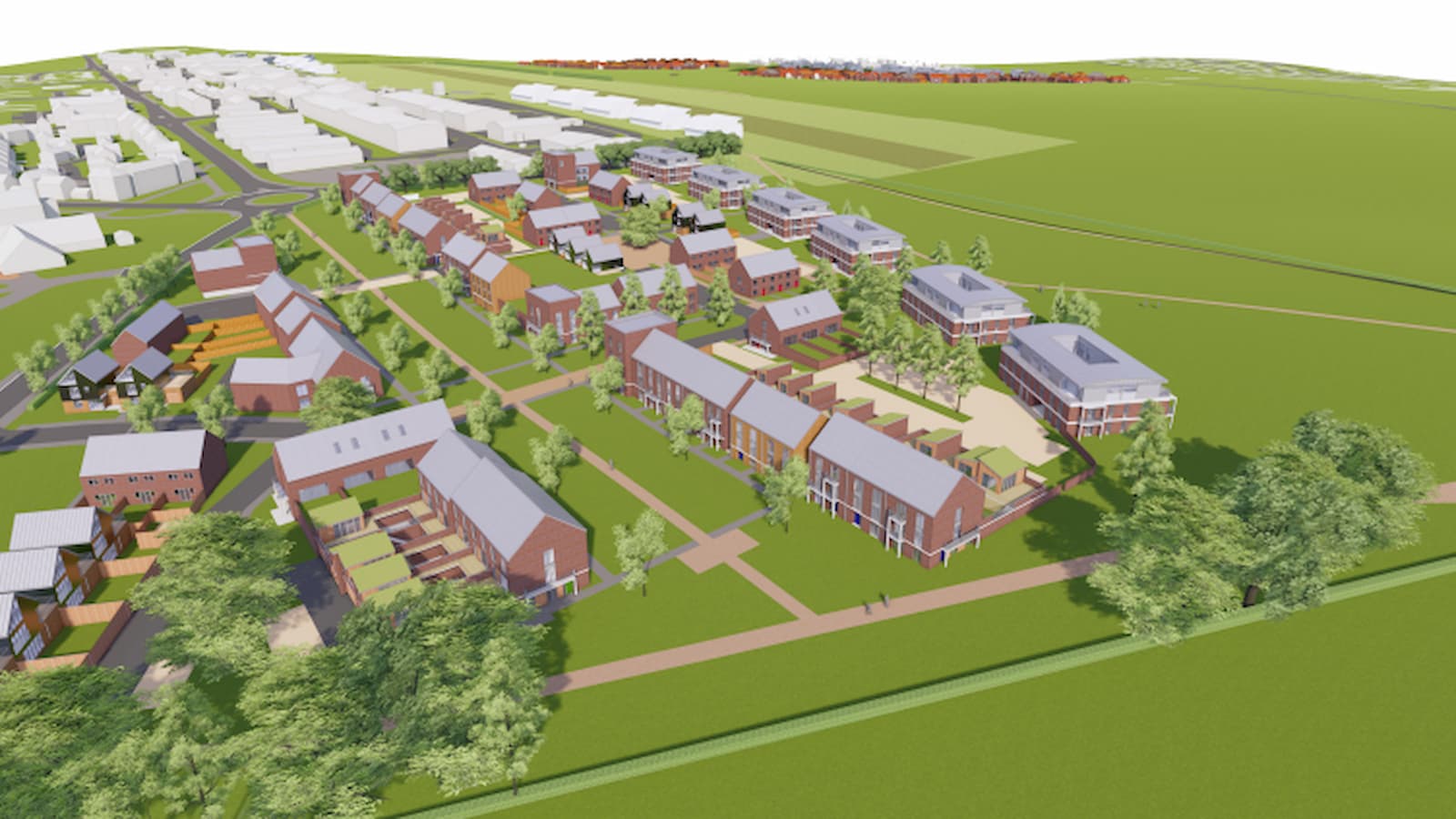Prospective self-builders searching for a unique and historically rich setting could soon have the chance to construct their dream home at one of Britain’s oldest airfields.
Old Sarum Airfield, which has stood since the First World War, is set to be transformed after receiving outline planning permission for 315 new homes – with at least 5% of the plots reserved for self and custom builds.
The approved 18.6-hectare scheme, located near Salisbury means serviced plots will be made available for individuals or families looking to design and build their own homes within a distinctive landscape shaped by aviation history.
At least 15 self build sites included
The airfield housing development will deliver 315 homes for around 740 people, with 25% (79 dwellings) allocated as affordable housing.
In line with Wiltshire Council’s Local Plan, which states that any development of over 20 homes must include at least 5% serviced plots for self build and custom build homes, meaning at least 15 self build plots within the Old Sarum development will be set aside.
These plots are designed to encourage more diverse and personalised housing options across the county and are expected to be delivered in serviced condition with access to utilities and roads.
Housing plans move forward despite noise and heritage concerns
One of the main points of contention in the development was the concern around aviation noise with parachute jumps and training flights previously generating complaints.
Bring your dream home to life with expert advice, how to guides and design inspiration. Sign up for our newsletter and get two free tickets to a Homebuilding & Renovating Show near you.
However, WIltshire Council downplayed these concerns stating that flight activity at Old Sarum has significantly dropped in recent years, falling from over 47,000 flight movements in 2017 to just 4,742 in 2024.
Planning inspector Frances Mahoney added: “While noise from the airfield has been a significant issue for the surrounding community, with the conditions set for reduced flight activity and noise restrictions, I am satisfied that the housing development can proceed without unduly affecting residents’ quality of life.”
Flight activity will be capped at 35,000 movements per year, and flights will be restricted during evening and early morning hours to minimise disruption.
A new chapter, respecting the old
Preserving the airfield’s aviation legacy was central to the planning debate. The site’s three listed hangars will be safeguarded, with Hangar 3, currently in poor condition, slated for full restoration before more than 160 homes can be occupied.
Wiltshire Council’s Planning Manager Richard Hughes emphasised that the development offers both heritage preservation and community value.
“Whether or not it is a heritage benefit or simply another benefit,” he said, “the removal of agricultural production outside the airstrip and the planned creation of wildflower meadows would benefit the conservation area and local landscape – as would the new path and cycle route, amenity areas and play zones.”
He also pointed to plans to enhance the airfield’s aviation role with a new café, heritage centre, and control tower, a move he said would “benefit visitors as well as those actively using the airfield’s flying facilities.”
Meeting a pressing housing need
The approval comes as Wiltshire faces a serious housing shortfall.
“The provision of 315 new dwellings – 25% of which will be affordable – is a substantial benefit in a council area currently able to deliver only a 2.03-year housing land supply,” Hughes noted.
Alongside housing, the development will deliver “a high-quality strategic landscape improvement” designed to soften the visual impact of existing commercial buildings and maintain the airfield’s historic character, according to Hughes.
A new Conservation Management Plan will offer public access and interpretative materials explaining the site’s wartime significance, ensuring that the airfield’s role in British history is not forgotten.
Moving forward with development
With outline planning permission now granted, the next phase will involve the submission of detailed proposals through a series of reserved matters applications.
These will cover specific aspects of the development such as the final layout, design of individual homes, landscaping plans, and the precise restoration schedule for the historic hangars – particularly Hangar 3.
Each reserved matters application will be subject to further public consultation and scrutiny to ensure that the development remains in line with both the planning conditions and the site’s unique heritage.
The phased approach means that construction can begin once the relevant approvals are secured, with the restoration of Hangar 3 required before more than 160 of the homes can be occupied.
Richard Hughes concluded: “I am confident that the development will be of high quality – enhancing the historic environment, protecting residents’ amenity, and retaining flying activity at the airfield.”
View the original article and our Inspiration here


Leave a Reply